Switch to the mobile version of this page.
Vermont's Independent Voice
- News
- Arts+Culture
- Home+Design
- Food
- Cannabis
- Music
- On Screen
- Events
- Jobs
- Obituaries
- Classifieds
- Personals
Browse News
Departments
-
Education

Scott Official Pushes Back on Former State…
-
News

Burlington Budget Deficit Balloons to $13.1 Million
-
Education

Senate Committee Votes 3-2 to Recommend Saunders…
- Court Rejects Roxbury's Request to Block School Budget Vote Education 0
- Norwich University Names New President Education 0
- Media Note: Mitch Wertlieb Named Host of 'Vermont This Week' Health Care 0
Browse Arts + Culture
View All
local resources
Browse Food + Drink
View All
Browse Cannabis
View All
-
Culture

'Cannasations' Podcaster Kris Brown Aims to 'Humanize'…
-
True 802

A Burlington Cannabis Shop Plans to Host…
-
Business

Judge Tosses Burlington Cannabiz Owner's Lawsuit
-
Health + Fitness

Vermont's Cannabis Nurse Hotline Answers Health Questions…
-
Business

Waterbury Couple Buy Rare Vermont Cannabis License
Browse Music
View All
Browse On Screen
Browse Events
Browse Classifieds
Browse Personals
-

If you're looking for "I Spys," dating or LTRs, this is your scene.
View Profiles
Special Reports
Pubs+More
19th-Century Educator Alexander Twilight Broke Racial Barriers, but Only Long After His Death. It’s Complicated.
Published September 20, 2023 at 10:00 a.m. | Updated September 27, 2023 at 10:10 a.m.
click to enlarge 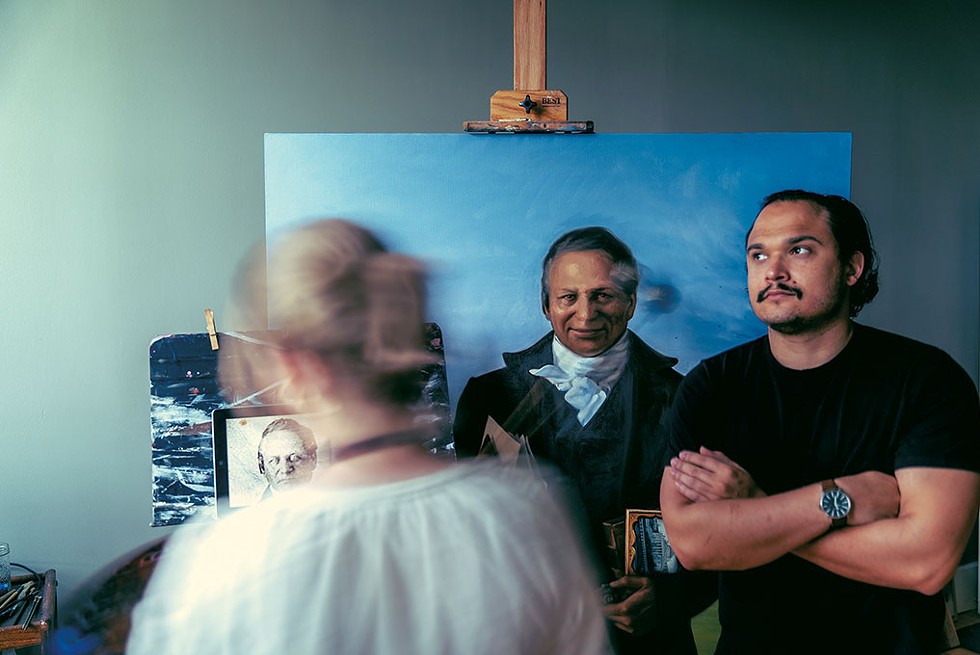

- Courtesy Of Demetrius Borge
- Katie Runde painting Twilight's Statehouse portrait while Demetrius Borge poses
"Nope." She added colors, mixed, scraped and scrutinized again.
Still no.
"Oh, God," she whispered. "Why is it so hard?"
First there was the matter of a smile. Runde couldn't produce a portrait of Alexander Twilight wearing the scowl she saw in the photo she used as a guide — the only image of him known to exist. True, the 19th-century Brownington minister and school headmaster had been strong-willed and strict. He built a four-story granite dormitory after school trustees said no. He expected students to study 10 hours a day and disciplined boys with a leather strap, but he was also known to amuse them with his sly, satirical humor. One would later recall his "mirth-provoking face, the jest-loving propensity, the perennial fun."
Runde wanted her portrait of Twilight, which was headed for the Vermont Statehouse, to convey that warmth. She had to figure out how a smile would change the rest of his face, his eyes, his forehead.
Now she mixed his skin colors. Accuracy was paramount but elusive. The tiny daguerreotype was black and white, and former students had described Twilight only as "bronzed" and "swarthy." Twilight today is celebrated as the first person of African descent to graduate from an American college, Middlebury, in 1823, and the first Black American to be elected to a state legislature. But the accomplishments are complicated by the fact that most Vermonters at the time perceived Twilight to be white.
Runde's skin-tone model was Demetrius Borge, a 2016 Middlebury College grad, filmmaker and photographer who shot as the artist worked. For hours, he documented her process, pausing to stand in front of her as she parsed his face into titanium white, yellow ochre, cadmium red, burnt umber, cobalt blue, black.
In the footage shot by Borge, Runde studied another hue. "It needs to be lighter, now that I've made it darker," she said. She added color, circled, scraped and held it up again. "Now it's too light."
"And to think," she said, "that there are usually paint colors called 'flesh tone.'"
"Lies," Borge said.
Runde and Borge were not alone in wrestling with the essence of Alexander Lucius Twilight, the trailblazing Middlebury graduate and Vermont legislator, who is receiving a burst of appreciation across the state. Born in Bradford in 1795 and raised in Corinth, Twilight thrived in an overwhelmingly white world, apparently without drawing attention to the fact that at least one of his parents was half Black.
Yet it is Twilight's Black identity that in modern times has put his name on a campus building and research program at Middlebury College and his portrait in the Statehouse last year — the only one depicting a person of color. In 2020, Vermont legislators declared his 225th birthday Alexander Twilight Day. Earlier this year, St. Johnsbury artist Bill Tulp released a graphic biography of Twilight. And just last month, the Old Stone House Museum & Historic Village in Brownington, headquarters of the Orleans County Historical Society, designated Twilight as its main draw.
While Vermont confronts past racism by erasing from public buildings the names of state figures associated with eugenics, it reckons with Twilight by highlighting him and seeking lessons in his story. The narrative comes with untidy complexities and irony — not the least of which is Middlebury's energetic embrace of a man it likely never would have admitted if it had known who he really was.
Middlebury graduated the first African American student "by accident," said Daniel Silva, an associate professor and past director of Black studies at the college. Indeed, 11 years after Twilight graduated, the college refused admission to Andrew Harris, who would go on to become the first Black student to graduate from the University of Vermont, in 1838. In 1845, Middlebury recruited Rutland resident Martin Freeman, but it did so with the intention of educating him so that Freeman could help develop a colony for free Black people on the west coast of Africa.
"What does that whole complicated, messy narrative also say about that relationship between institutions of higher education and racial exclusion, whether it's in the context of the 1820s, when [Twilight] was admitted, or it's in the context of the 2020s, where we still have huge issues of racial exclusion on college campuses and in society more broadly?" Silva asked.
That's one of the big questions the college hopes to tackle this week during its annual Clifford Symposium, which starts on Thursday, September 21. Twilight is the focus of the three-day symposium, which will commemorate his 228th birthday and the bicentennial of his 1823 graduation — and use his story as a springboard to explore racial inequities still roiling American society.
"Should Twilight's blackness matter to us today?" symposium co-organizer Bill Hart asked in an essay published in Vermont Almanac. Hart, a professor emeritus of history at Middlebury, said the matter of Twilight's racial ambiguity offers an opportunity to consider race and racial identity in a more sophisticated, nuanced way.
Indentured Farmhand to Middlebury Grad
No one knows how Twilight identified himself racially. Documentation of his life is spare. Hart, who is writing Twilight's biography, believes that Twilight was most likely one-quarter Black. Hart has found no evidence that anyone who interacted with Twilight throughout his college and professional lives considered him Black.
A review of Twilight's life, based on interviews with Hart and research by several other experts, does not indicate that race played an outward role in it.
His father, Ichabod Twilight, was born in Boston in 1765 to a Black father and, it is believed, a white mother. Probably a free man, he enlisted in the Continental Army toward the end of the Revolutionary War. Twilight's mother, Mary, was either white or biracial. The couple moved to Vermont in 1793, and Alexander, the third of their six children, was born on September 23, 1795.
The family moved about three years later to Corinth, where Ichabod bought 50 acres and farmed. When Alexander was about 8 years old, he was indentured to William Bowen, a neighboring white farmer, in an arrangement then common for families of modest means, including white ones. While living with the Bowens, he learned to read and write and do math. He completed his indentureship a year early, at age 20, then enrolled at Orange County Grammar School in Randolph, where over the next six years he would complete secondary school and the first two years of college coursework.
The idea to apply to Middlebury College in 1821 may have come from the school's president, reverend Joshua Bates, whom Twilight likely met in Corinth at the ordination of Twilight's pastor. Twilight enrolled that year as a junior at age 26. His courses included surveying and navigation, natural philosophy, astronomy, and Greek literature. Drawn to natural theology, the doctrine that says God's divine truths are discoverable in nature, he checked out William Paley's book on the topic from the college library 10 times.
After graduating in a class of 18, Twilight took a teaching job in Peru, N.Y., where he met Mercy Ladd Merrill, a white woman about 10 years younger. They married in 1826. Twilight continued to study theology and was licensed to preach by the Champlain Presbytery in Plattsburgh in 1827.
The couple moved to Vergennes the next year. Twilight taught school and preached on alternating Sundays in Ferrisburgh and Waltham, walking to both — three miles to Ferrisburgh, four miles to Waltham.
In 1829, the couple moved to Brownington, the hilltop town in Orleans County where Twilight would live for 24 years and make his mark. Situated on the principal stage route between Montréal and Boston, it was a thriving town of 400 residents. Twilight arrived as preceptor of the Orleans County Grammar School and acting pastor of Brownington Congregational Church.
His reputation as a charismatic and talented teacher spread, and boys and girls — all white, mostly in their teens and early twenties — came from Vermont and Québec to attend the two-story, white-clapboard school. The curriculum included Latin, Greek, geology, chemistry and astronomy. Enrollment climbed as high as 140.
Convinced that students could learn more if they lived on-site — and interested in another source of revenue — Twilight set out to build a dormitory, but school trustees, wary of acquiring debt and depriving townspeople of the income they received by boarding students, rejected the proposal. So Twilight forged ahead without them or their financial backing. According to legend, he built the dormitory alone with the help of an ox and an iron pry bar. Historians believe he rounded up financial and physical help to harvest granite from nearby fields and build the four-story dormitory. He patterned it after Painter Hall, one of two buildings that comprised Middlebury College when he attended, and which still stands.
Twilight named the dorm Athenian Hall, though it became better known as the Stone House.
About the same time, residents in neighboring Craftsbury asked the state for the second time to recognize their school. The bill, if passed, would divide state funds between the two schools. Twilight took a leave from his academy and ran for the state legislature with the sole purpose of opposing the move. He won election to the Vermont House in 1836 but lost his bid to deny Craftsbury. He left the Statehouse after a single term to return to his school, which became known as Brownington Academy.
The national economic collapse known as the Panic of 1837 forced Twilight, now deep in debt, to mortgage his home and the school dormitory. He managed to keep tuition steady and enrollment at 85 in 1839, but tensions between Twilight and school officials continued to rise. Church officers, too, were growing weary of Twilight. They had heard complaints about his eclectic preaching over the years and were irritated that he didn't contribute more money to the church. School trustees began searching for his replacement, and Twilight left. In 1847, he and Mercy moved to Québec, where he taught and ran schools for the next five years.
Brownington Academy faltered, and trustees invited Twilight to come back in 1852. Welcomed with a celebration in Athenian Hall, Twilight declared, "This is the home of my choice and here with the blessing of God I will devote myself to the interests of education."
His time was short, however. In October 1855, a paralyzing stroke forced him to stop teaching. Twilight died on June 19, 1857, and the school closed for good two years later. Mercy ran Athenian Hall as a boardinghouse and tavern for a time, even though she had been a temperance advocate. She died in 1878. The couple, who had no children, are buried side by side in Brownington Congregational Church cemetery, within sight of Athenian Hall.
In 1917 or 1918, the Orleans County Historical Society, of which Twilight was a charter member, saved Athenian Hall from the wrecking ball and builders who saw in its mammoth stone blocks the makings of bridge abutments. Old Stone House opened as a museum in 1925 and today anchors a historic district that's on the National Register of Historic Places and the Vermont African American Heritage Trail.
If You Could 'Pass,' You Did
So how did a man who, by all accounts, was seen and treated as white during his lifetime become an African American icon more than a century after he died?
People speculated for years about Twilight's race, said Hart, the biographer. A brief 1919 memo from Middlebury president John Thomas to another college official refers to Twilight as a "negro" who did "notable work in connection with Vermont education." It is unclear why they were discussing Twilight, though Hart speculates that Thomas was repeating what a college dean believed to be true.
Fast-forward to the mid-1940s: Thomas, by then a state representative, was party to a flurry of correspondence inquiring about whether Twilight was Black. The writers may have been seeking to establish whether Twilight had been the first African American legislator in Vermont, at a time when some news reports were lending that honor to William Anderson, a Black man who had recently been elected. One historian involved in the conversation was working with the state commission planning to erect a historic marker at the Old Stone House.
In 1974, Twilight "became Black," in Hart's words. That was when then-editor of the Middlebury College News Letter, Gregor Hileman, for reasons still unclear, combed through U.S. Census data and found results for two years — 1800 and 1810 — in which census takers marked Twilight in the category "all other free persons, except Indians not taxed," the designation for free Black people.
Americans did not self-report their census information in those days. Hart suspects that in 1800, a census taker saw Twilight's father, Ichabod, who likely had darker skin, and concluded that the family was Black. In 1810, Ichabod was not in the home and the census taker marked the household as white. However, Alexander was living with the white Bowen family at the time and was counted as Black.
In every census after that, Twilight was recorded as white, as were his siblings and their families.
Twilight didn't "pass'' as white, a term that implies he purposefully hid his ancestry, Hart said. Instead, he "was passed" by people who assumed he was white. Twilight "performed whiteness," meaning he fulfilled white expectations of white identity, Hart said: "Here's a man who's racially ambiguous, college-educated, pastor, successful teacher, legislator. What Black person would be able to claim those achievements?"
It's easy to understand why Twilight might have accepted his white assignment at a time when politics around race in Vermont were full of contradictions. Although Vermont had abolished slavery in 1777 — the first colony to do so — it permitted enslavement of girls until age 18 and boys until 21. The law was weak, and slavery continued — including among adults — into the 19th century. Prominent Vermonters who enslaved people include Revolutionary War patriot Ethan Allen's brother Levi and daughter Lucy Caroline Hitchcock; Supreme Court justice and state legislator Stephen Jacob; and North Bennington's most prosperous citizen, Moses Sage. Vermont was the first state to establish an auxiliary of the American Colonization Society, formed to reduce the population of free Blacks in the country by sending them to Liberia, the colony that the society, backed by federal dollars, would establish on the African coast.
The Vermont Anti-Slavery Society was formed in 1834, and a number of residents became active in helping enslaved people escape bondage. But Vermonters also protested abolition activists who came to speak in their towns. Samuel J. May of the Massachusetts Anti-Slavery Society was attacked five times while touring Vermont in 1835. Abolitionists speaking in Orleans County were booed and pelted with rocks and eggs while Twilight lived there. Members of a group traveling with Frederick Douglass, the country's best-known abolitionist speaker, were greeted similarly in Middlebury in 1843.
Twilight appears to have made few comments about slavery. Although the abolitionist cause animated other New England clerics, historians have found only two Twilight sermons, delivered late in his career, in which he denounced slavery.
For Black people in Vermont at the time, freedom did not mean equality, said historian Elise Guyette, author of Discovering Black Vermont: African American Farmers in Hinesburgh, 1790-1890. "Slavery painted everybody of that color as inferior."
During Twilight's time, many white Americans saw race as intrinsic to character, Hart said. White was synonymous with freedom, independence and citizenship, while Black was equated with dependency, indolence and inferiority.
Interactions across racial lines, including marriage and informal unions, were not uncommon during the colonial period and early years of nationhood. But race-based stratification was readily visible in the workforce. Throughout the 19th century, Black Vermonters struggled to leave white households and menial jobs, Guyette said. In 1790 and 1800, 80 percent of Black Vermonters lived in white households, likely as domestic workers or farmhands. By the 1840s and 1850s, that figure was still at least 50 percent.
"If you were going to be discriminated against, it was going to affect your livelihood," Guyette said. "And [if] you could pass [for white], you did."
Twilight Today
In Brownington, the historical marker erected in 1948 and titled "Old Stone House" has been replaced by a new one titled "Alexander Twilight." Museum trustees, charged with preserving and sharing the history of the entire county, have made Twilight the site's primary focus.
"This is our North Star," board member Carmen Jackson said.
Other entities, some far from Orleans County, also promote Twilight's legacy. In Boston, the Alexander Twilight Academy provides free year-round coursework to sixth graders in need, along with leadership training and mentors until they graduate from college. Even Chance the Rapper has paid respect: He teamed up with Box Tops for Education in 2020 to give cash to outstanding teachers through what is known as the Twilight Awards.
Some may question whether Middlebury College and the state of Vermont deserve the reflected glory of a man they didn't know at the time was Black. In Middlebury's favor, Hart points out that in 1804, 17 years before Twilight was admitted, the college awarded an honorary degree to Lemuel Haynes, a West Rutland minister who identified as Black. But then it would later refuse admittance to Andrew Harris, who went on to become UVM's first Black graduate. When four Black men from Philadelphia asked to attend Middlebury in 1845, president Benjamin Labaree told trustees that enrolling all four at once would "create the impression that this is the College for the resort of colored students." Then, in 1986, Middlebury named an academic building Twilight Hall.
It's complicated.
Middlebury continues to use Twilight to examine its own history. Its Twilight Project, headed by Silva, has sponsored student research into the school's treatment of marginalized communities. During the three-year term of the project, students have recorded the oral histories of athletes of color, documented experiences of students who have disabilities, and examined the life stories of people whose names appear on campus buildings, streets and landmarks.
The name Mead, under scrutiny before the project began, was stripped from the college chapel in 2021 because of the role its namesake, former Vermont governor John A. Mead, played to advance eugenics, the theory that abstract human qualities, such as intelligence and social behaviors, are inherited, and humans could be improved through selective breeding. Students have submitted other names to school administrators for review.
Students will present their research at this week's symposium, which organizers say is dedicated to "critiquing, interrogating, and problematizing" the themes raised by Twilight's life and times.
Hart hopes that people take away a deeper understanding of how and why we define race. "We need to understand that racial assignment is not something that's essential," he said. Rather, race is a socially manufactured and agreed-upon categorization that uses whiteness as the norm, he said. "By assigning racial categories to nonwhite people, we are preserving white privilege and ... white supremacy."
Twilight had Black ancestry, Hart said, but by assigning him Blackness today, "we are buying into this long tradition now of the 'one-drop rule,' that any one drop of nonwhite ancestry gives you that racial designation of that nonwhiteness." He calls that rule "absurd" and points to Homer Plessy, the New Orleans man at the center of the 1896 landmark U.S. Supreme Court case Plessy v. Ferguson that established the "separate but equal" doctrine central to Jim Crow racial segregation. Although Plessy was seven-eighths white, he was arrested in an act of civil disobedience after refusing to leave a "whites-only" streetcar.
Always a nation of immigrants, the United States is becoming more racially diverse — and complex — by the day, with white people predicted to be in the minority in a few decades. "How are we then going to define race going forward?" Hart asked.
Some would look to Twilight, who operated a thriving school, built a landmark dormitory, and served as a minister and lawmaker. "This," said Jackson, the museum board member, "is what can be accomplished when you're not held back by other people's expectations."
Hateful Graffiti mars Twilight Historic Site
Vermont State Police this week continued to investigate hate-filled graffiti that, on the second weekend of September, was spray-painted on the Prospect Hill observatory at the Old Stone House Museum & Historic Village. Meanwhile, supporters of the Brownington site, which includes the former home and school of Alexander Twilight, the trailblazing Black educator, have pledged a $5,000 reward for information that leads to a conviction.
Museum neighbors Ellen Harvey and Bob Murphy discovered the graffiti on September 10 while walking their dog on Prospect Hill. "We were horrified," Harvey said. Words and images, including about five swastikas, targeting Jews, Black people and women had been sprayed on floors, posts and railings.
Harvey was part of a four-person crew that scrubbed the paint with bleach, paint thinner and wire brushes. The group used black paint to cover what it couldn't remove. The tower reopened a couple of days later.
The Old Stone House Museum focuses on Twilight, the 19th-century headmaster, minister and legislator who is widely believed to be the first person of African descent to graduate from an American college, Middlebury, in 1823.
The original observatory was built in 1898 for William Barstow Strong, a student of Twilight's who went on to become president of the Atchison, Topeka and Santa Fe Railway. It has been rebuilt twice.
The museum, open from mid-May through mid-October, welcomes visitors to Prospect Hill and the observatory for no charge. From the top of the 25-foot tower, which is open year-round, one can see Canada, lakes Memphremagog and Willoughby, and New Hampshire's White Mountains.
Popular for walks, cross-country skiing and snowshoeing, the hill has long been a hangout for young people.
Museum trustee Jane Greenwood said she keeps a can of black spray paint in her truck to blot out words that she finds painted on the tower several times each summer. Harvey and Murphy bring a bag to collect discarded beer cans.
Seeing "those hateful words" on this "soul-enriching" site was "just nauseating," Harvey said. She and Murphy started the reward fund. The crime has sparked outrage, Harvey said, and already has prompted several people to open their checkbooks to say, "Not in my neighborhood."
Anyone with information can contact Vermont State Police at 334-8881, online at vsp.vermont.gov/tipsubmit or by texting VTIPS to 274637.
Clifford Symposium 2023: "Twilight at 200: Race and the Academy," Thursday, September 21, through Saturday, September 23, at Middlebury College. middlebury.edu
The original print version of this article was headlined "Twilight Hour | 19th-century educator Alexander Twilight broke racial barriers, but only long after his death. It's complicated."
Got something to say?
Send a letter to the editor
and we'll publish your feedback in print!
About The Author

Mary Ann Lickteig
Bio:
Mary Ann Lickteig is a Seven Days culture staff writer based in Burlington. Prior to joining the writing staff, she was a contributing editor to both Seven Days and Kids VT. She previously worked as a reporter for the Burlington Free Press.
Mary Ann Lickteig is a Seven Days culture staff writer based in Burlington. Prior to joining the writing staff, she was a contributing editor to both Seven Days and Kids VT. She previously worked as a reporter for the Burlington Free Press.
More By This Author
Latest in History
Related Locations
-
Middlebury College
- 131 S. Main St., Middlebury Middlebury Area VT 05753
- 44.00782;-73.17400
-
 802-443-5000
802-443-5000
- www.middlebury.edu
-
Old Stone House Museum & Historic Village
- 109 Old Stone House Rd., Brownington Northeast Kingdom VT 05860-4420
- 44.83604;-72.16581
-
 802-754-2022
802-754-2022
- www.oldstonehousemuseum.org
-
Be the first to review this location!
Related Stories
Speaking of...
-

Middlebury: What to See, Do and Eat During the Eclipse
Mar 6, 2024 -

In Terms of Registering to Vote, Midd Kids Are Top of the Classes
Feb 28, 2024 -

Ninth Annual Middlebury New Filmmakers Festival Features Themes of Perseverance
Aug 16, 2023 -

Arts, Recreation and Educational Groups Make Bank on Federal Pandemic Funding
Mar 24, 2023 -

Formerly Incarcerated Women to Find Work and Housing Through a New Program
Mar 8, 2023 - More »


























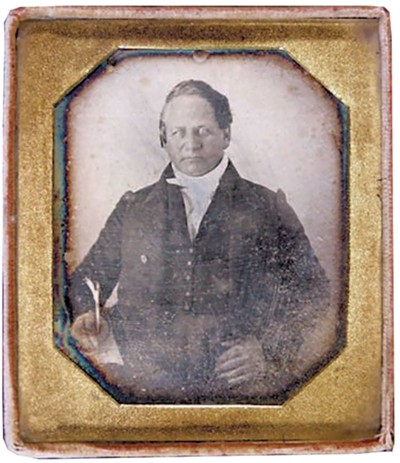

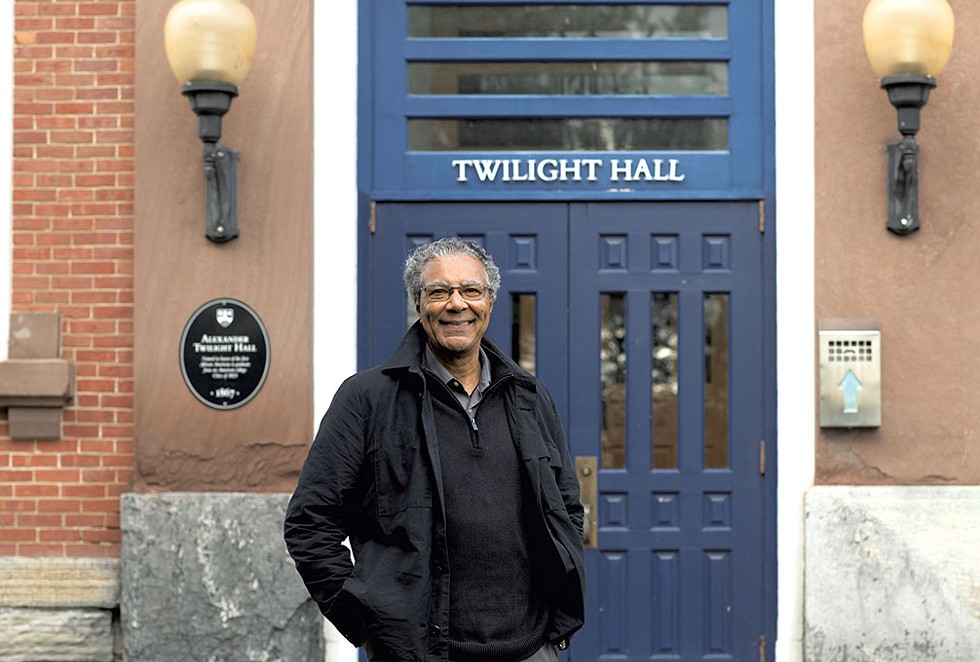
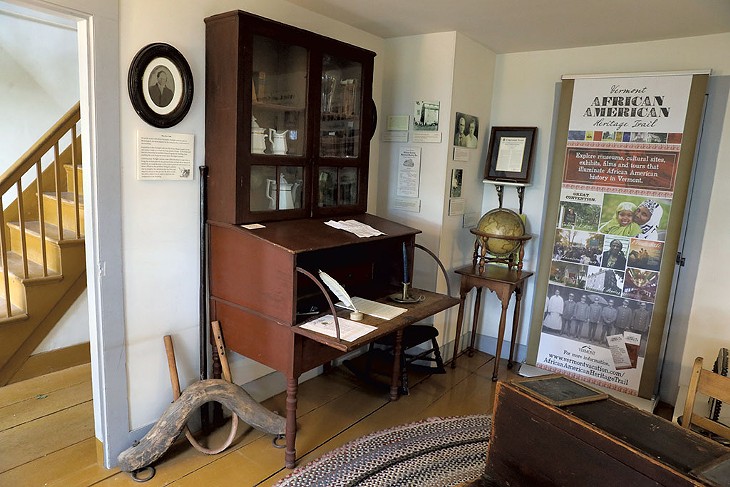


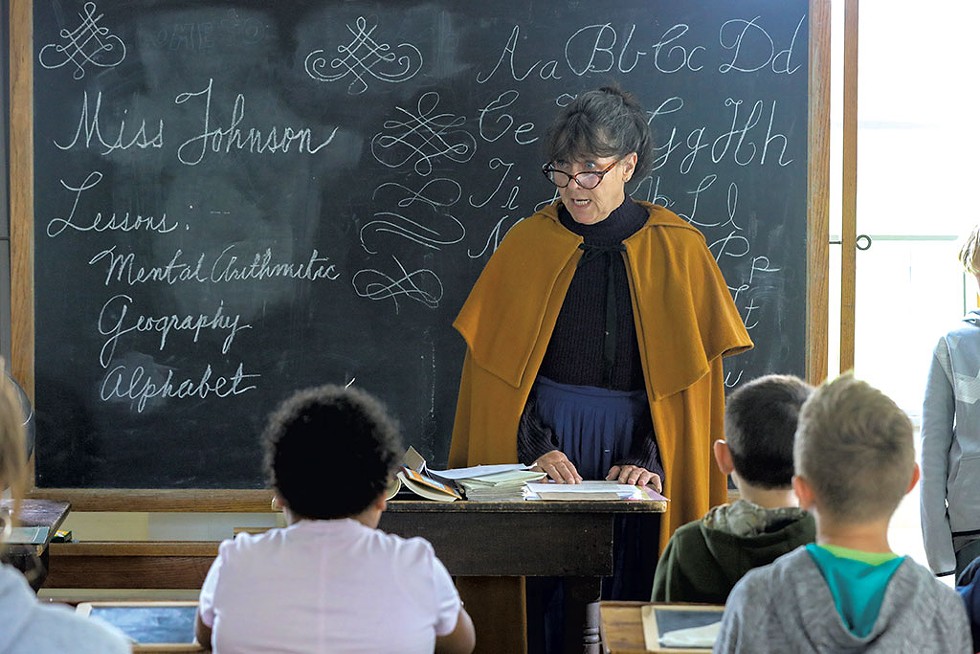
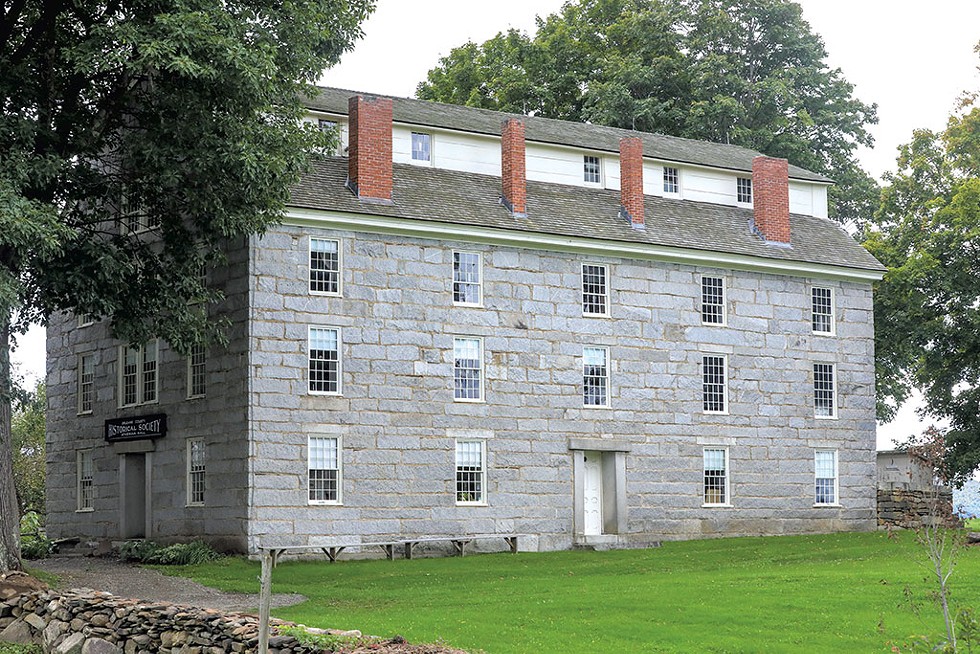









find, follow, fan us: